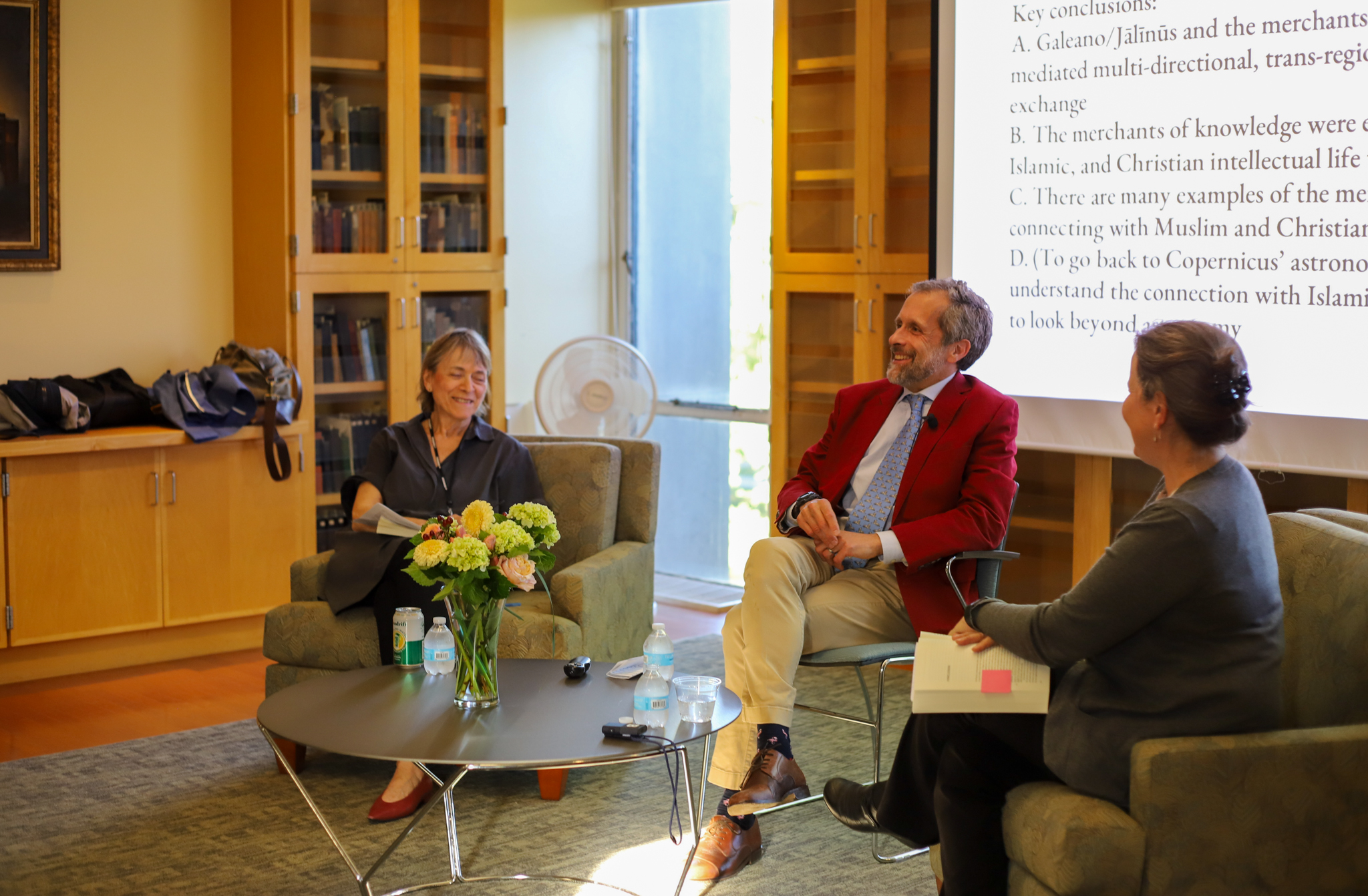Robert Morrison launches book delving into the exchange of knowledge in the Ottoman Empire and Renaissance Europe
September 19, 2025
 Kiran Elfenbein
Kiran ElfenbeinFaculty, students and community members gathered in Hawthorne-Longfellow Library (H-L) on Thursday night to celebrate the launch of Professor of Religion and Middle Eastern and North African Studies Robert Morrison’s new book. Morrison’s book, “Merchants of Knowledge: Intellectual Exchange in the Ottoman Empire and Renaissance Europe,” focuses on the merchants of knowledge, a group of Jewish scholars who were able to connect the knowledge of the Ottoman Empire and Renaissance Europe.
Morrison began the talk by introducing the merchants of knowledge.
“Who were the merchants of knowledge? They were a trans-regional network of Jewish scholars who knew each other and came from families engaged in commerce that bridged the Ottoman Empire, Crete and the Veneto…. [Because these families] were also engaged in commerce … [the term] merchants of knowledge is kind of a double entendre,” Morrison said. “There are many documented instances of intellectual exchange between the merchants of knowledge and their Muslim and Christian contacts.”
The merchants of knowledge sold manuscripts in various fields, including philosophy, medicine, astrology and mechanics, to many significant mercantile families. However, Morrison explained that they were not simply the bearers of knowledge but also creators of culture in their own right.
“By labeling the most important scholars from these families [as] merchants of knowledge, I couch the intellectual exchange in terms of the scholars’ own prerogatives, not in terms of any agenda of Renaissance humanism or any telos in the history of science. Not all of the disciplines in which there was exchange are relevant to dominant narratives of scientific progress. Rather, I find that the threads of transregional conversations in a variety of disciplines intertwined,” Morrison said. “As the scholars I study were engrossed in several disciplines, exchange also flowed in multiple directions, and that’s another innovation in this book.”
Before landing on the topic of the merchants of knowledge, Morrison’s research initially began with the question of how Copernicus had acquired the knowledge for his heliocentric astronomy.
“For over a century, historians of science have been aware of similarities between the astronomy of Islamic societies and Copernicus…. Copernicus was the first to propose a mathematically sophisticated heliostatic system,” Morrison said. “The possibility that trans-regionalist Islamic societies contributed to [his] theories was first considered by historians in the 1950s. Then at the beginning of this millennium, the eminent general, historian [and] astronomer John Warren concluded that, ‘It’s hardly possible to doubt that Copernicus was aware of some text or another in which they, and that would be Islamic theories, were to be found.’”
Professor of English Marilyn Reizbaum, who moderated the event alongside Associate Professor of Digital Humanities Crystal Hall, reflected on how Morrison’s book conjoins two groups in history, Muslims and Jews, often regarded as antagonistic toward each other. Morrison explained that the translation and transaction of knowledge was able to do this.
“Translation is huge. The merchants of knowledge [were] multilingual, and part of the reason they were so good at what they did was that they knew many languages, and that type of linguistic knowledge was in demand,” Morrison said. “But it’s going back and forth, and often, they’re composing more than the language. And just that fact is going to tell you that the exchange is bi-directional or multi-directional.”
Morrison added that it was not just knowledge that flowed between the regions, but rather objects as well, which are sometimes overlooked when only focusing on the scholarly aspect of the transaction. Such objects also helped paint a fuller picture of the history of exchange.
“I’m building a bridge sometimes between non-scholarly translation and scholarly translation in terms of demystification…. [N]ot just knowledge is transacted, but also objects,” Morrison said.
Attendee Maadhavan Prasanna ’29 reflected on how Morrison’s line of research can make the current understanding of history more representative of what it actually was.
“I guess it’s all too easy to subscribe to this theory of knowledge where everything just came from Western traditions,” Prasanna said. “Considering the sharing and this exchange and bringing the Ottoman Empire and the Middle East back into it, I think it is very critical for us to develop a more holistic understanding of history that is more representative.”

Comments
Before submitting a comment, please review our comment policy. Some key points from the policy: